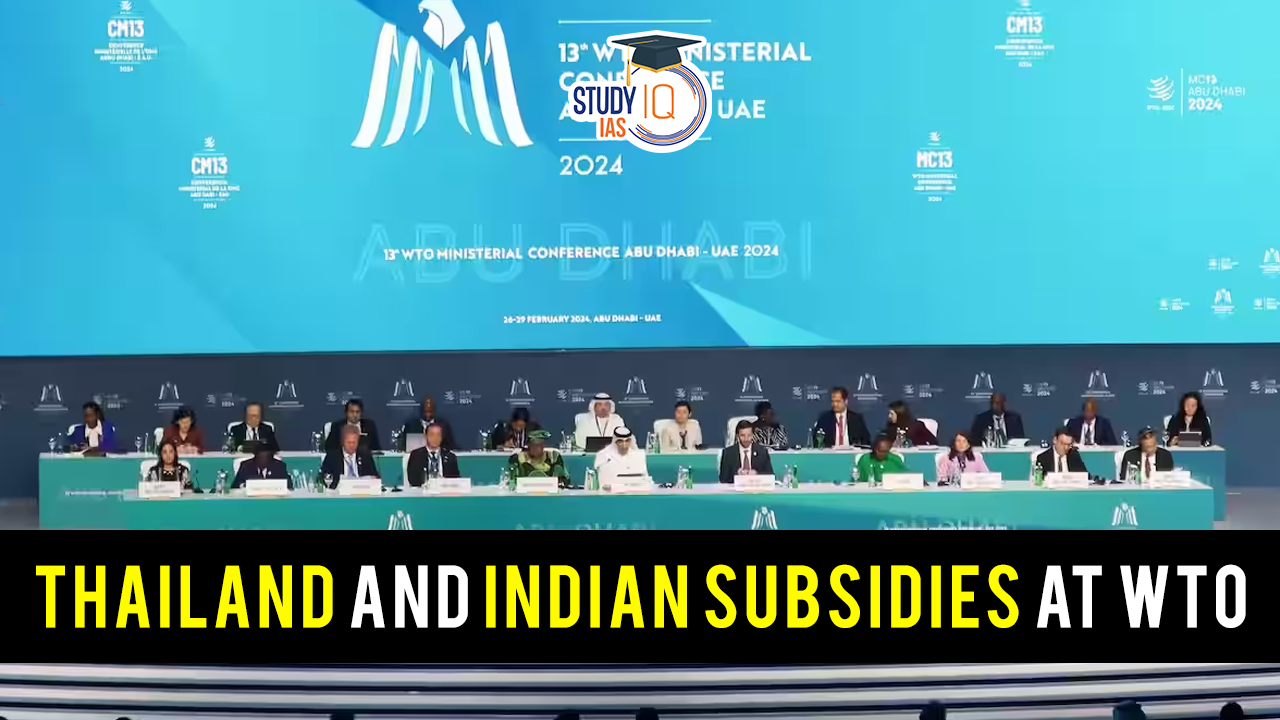Table of Contents
Context: Thailand has replaced its Ambassador to the World Trade Organisation (WTO) after India formally registered a protest over her comments on India’s PSH (Public Stockholding) programme.
Thailand’s Concerns
- Cairns Group’s Position: Thailand, along with the Cairns Group (a group of 20 nations advocating for agricultural trade liberalisation) highlighted that:
- India’s Public Distribution System (PDS) procures rice from producers at a minimum support price (MSP) and sells it at subsidised rates to the public.
- Thailand argues this is not solely for the benefit of the people but also to “capture” the export market.
- De Minimis Limit: The AoA stipulates a product-specific support limit of 5% for developed countries and 10% for developing countries.
- India’s Breach of Limits: India exceeded the 10% de minimis limit for rice, contributing to international discontent.
India’s Argument and Demand
- Subsidy Calculation Dispute: India has challenged the WTO’s subsidy calculation method, which is based on outdated 1986-88 prices.
- Critique of Peace Clause: India and other developing nations criticise the ‘peace clause‘ for its stringent conditions and seek a permanent solution for PSH.
- Comparison of Subsidies: India points out that its subsidies are significantly lower than those provided by the US and EU.
Indian Farmers’ Stance
They demand:
- Removal of the agriculture sector from the WTO agreement.
- Legal guarantees for MSP (Minimum Support Price).
- Debt waiver.
- Implementation of Swaminathan Commission recommendations on agriculture issues.
- Pensions for farmers.
Potential Issues with Leaving the WTO: Experts warn that exiting the WTO could:
-
- Limit India’s ability to challenge subsidies of developed nations.
- Pose problems for India and other developing countries in the long run.

| Facts |
|


 India's First Indigenous Hydrogen Fuel C...
India's First Indigenous Hydrogen Fuel C...
 Assam’s Majuli Hosts ‘Charaichung Fe...
Assam’s Majuli Hosts ‘Charaichung Fe...
 BlueBird-6 Satellite: ISRO to Launch Hea...
BlueBird-6 Satellite: ISRO to Launch Hea...

























